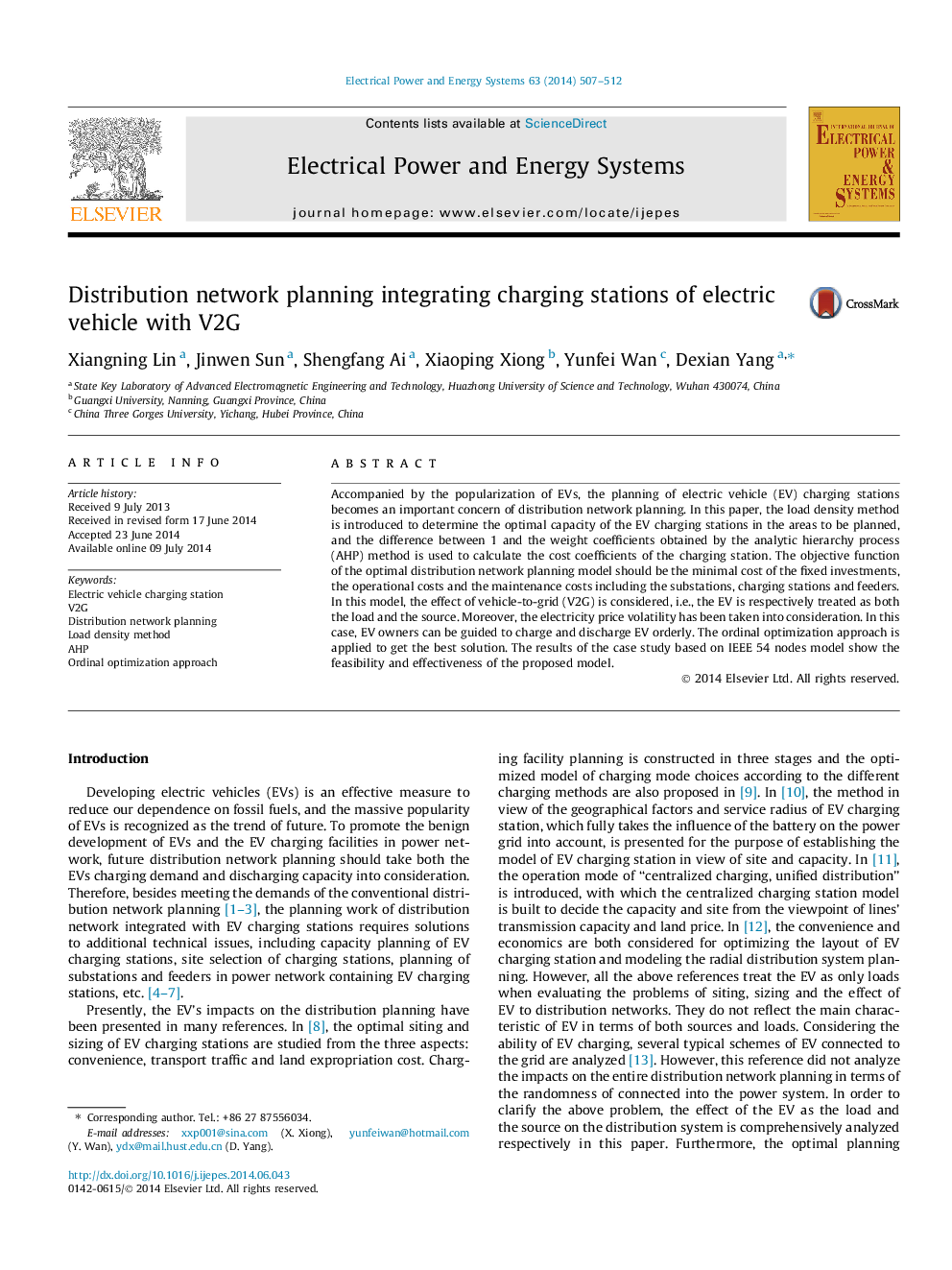| Article ID | Journal | Published Year | Pages | File Type |
|---|---|---|---|---|
| 6860157 | International Journal of Electrical Power & Energy Systems | 2014 | 6 Pages |
Abstract
Accompanied by the popularization of EVs, the planning of electric vehicle (EV) charging stations becomes an important concern of distribution network planning. In this paper, the load density method is introduced to determine the optimal capacity of the EV charging stations in the areas to be planned, and the difference between 1 and the weight coefficients obtained by the analytic hierarchy process (AHP) method is used to calculate the cost coefficients of the charging station. The objective function of the optimal distribution network planning model should be the minimal cost of the fixed investments, the operational costs and the maintenance costs including the substations, charging stations and feeders. In this model, the effect of vehicle-to-grid (V2G) is considered, i.e., the EV is respectively treated as both the load and the source. Moreover, the electricity price volatility has been taken into consideration. In this case, EV owners can be guided to charge and discharge EV orderly. The ordinal optimization approach is applied to get the best solution. The results of the case study based on IEEE 54 nodes model show the feasibility and effectiveness of the proposed model.
Related Topics
Physical Sciences and Engineering
Computer Science
Artificial Intelligence
Authors
Xiangning Lin, Jinwen Sun, Shengfang Ai, Xiaoping Xiong, Yunfei Wan, Dexian Yang,
